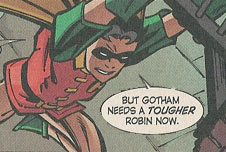This spring bookseller and author Elizabeth Bluemle shared an essay called “The Elephant in the Room,” that pachyderm being the related issues that:
- Decision-makers in book publishing come largely from America’s upper- and upper-middle classes, with a resulting dominance of white people bringing certain experiences and values.
- The book industry publishes disproportionately few books about non-white readers, particularly young ones, and by non-white authors.
I think it’s a valuable discussion-starter, but in a couple of places I thought the essay started off in the wrong direction. Most notably:
WHAT SALES & MARKETING CAN DO:
Never, ever advocate whitewashing a book cover. The moral cynicism of this action is a terrible betrayal of your authors and readers. It bankrupts your reputation and is not easily forgotten. In this age of instant social networking, it will be discovered and shared.
So has anyone “discovered and shared” examples of Sales & Marketing, a publishing executive, a chain buyer, or anyone else in the industry “advocating whitewashing”?
Children’s-book bloggers caught some recent book jackets that depict dark-skinned characters with skin lighter than as their authors describe, not easily recognizable as people of color. But in all that discussion I don’t remember any exposé about how a person within publishing pushed to misrepresent those characters’ appearances. Or asking to move a non-white character to a less prominent position because it would supposedly help sales.
Maybe those discussions
are taking place—in which case, they’re
not being “discovered and shared.“ More likely, I think, very few people are saying such things. Within that class of Americans who dominate book publishing (as noted above), the shared value system makes expressing such ideas anathema, even if people do believe them.
Putting “Never advocate whitewashing” on the to-do list isn’t going to get us far, therefore, if
nobody thinks they do that. As Elizabeth’s article notes about more general preferences and prejudices:
This kind of bias is completely unconscious, [Mahzarin?] Banaji states, present in people who are absolutely positive they don’t have it and who are committed to treating everyone fairly (and think they do).
The effective to-do list has to start with unearthing unrecognized biases or assumptions—which is the target of most of Elizabeth’s other advice.
I suspect the problems with covers for
Magic Under Glass and
Mysterious Benedict Society titles arose because people involved in producing those covers didn’t get
enough instruction on the characters, not because someone instructed them to “whitewash.” (The problem with
Justine Larbalestier’s
Liar is harder to figure.)
Elizabeth’s article also tells editors: “In committee, describe books by authors and illustrators of color, and/or about characters of color, the same way you would books about and/or by white people.” Except that an editor might have to speak up when a character is dark-skinned simply because that won’t be the default assumption for most people working on the book. (This is an exception in the essay’s recommendations about confronting matters of race, class, and privilege, so Elizabeth might have intended something different in “the same way.”)
Around the same time that Elizabeth’s article appeared, there was an interesting discussion of showing young people of color on book jackets through
Hunger Mountain. To simplify things too much, Mitali Perkins asked if
jackets would do better not to depict characters in any racially identifiable way so readers wouldn’t exercise their unconscious biases before trying out the books; Tanita Davis advocated for
more books showing non-white people so as to serve non-white readers.
I’d like to see more commentary on this topic from people who have lots of discussions about book covers: art directors, designers, editors, sales and marketing staff. I think their input would give a better picture of what sort of discussion precedes a book design, and what factors are involved. I’m looking forward to the
article Jacket Whys is preparing on the topic, and grateful for yesterday’s link to
Beyond the Covers, which shows alternative ideas for covers. People outside the process—and that usually includes authors, alas—may not have a realistic sense of it.
Last month folks were discussing the value of prologues in novels; see comments from Nathan Bransford and his community and Dear Editor.





 The second was
The second was 








